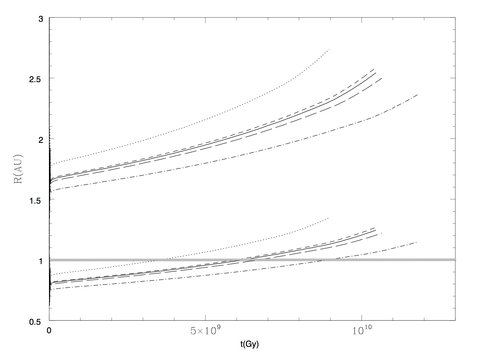2012 Annual Science Report
 Arizona State University
Reporting | SEP 2011 – AUG 2012
Arizona State University
Reporting | SEP 2011 – AUG 2012
Astrophysical Controls on the Elements of Life, Task 2: Model the Chemical and Dynamical Evolution of Massive Stars
Project Summary
Stars create the chemical elements heavier than hydrogen and helium, with the majority arising from the lives and violent deaths of massive stars in supernova explosions. The starting chemical composition of stars also affects their evolution and that of their associated planets. We have performed computational simulations for a large range of stellar masses to provide predictions for important stellar characteristics (i. e. brightness, temperature, stellar winds, composition) over the stars’ lifetimes and made the data available to the public. We have also simulated the explosions of massive stars to predict the chemical abundances of material ejected from the dying stars and how that material is distributed in the surrounding universe. As a complement, we are finding the chemical abundances of hundreds of nearby, potentially habitable stars and modeling how the habitable zones and planets of stars with different abundances evolve.
Project Progress
The composition of stars strongly influences their evolution and properties of their planets. Patrick Young and Kelley Liebst (ASU) have created stellar models of a range of stars for variable elemental abundance ratios with the TYCHO stellar evolution code. The abundance variations were taken from the work of Michael Pagano (ASU) analyzing stars from radial velocity planet searches (Jade Bond, University of New South Wales and Paul Butler, Carnegie Institute for Science). Typically abundance ratios for stellar models are assumed to scale as they do for the sun, but data shows significantly non-solar ratios in potential planet hosts. We find that the variation in abundance ratios observed in nearby stars have a substantial effect on the evolution of habitable zones around stars. The effect of the O/Fe ratio is particularly significant. The lifetimes of one solar mass stars change by approximately 3 billion years over the observed range of O/Fe. For an Earth-like planet in a one astronomical unit orbit, the time spent in the star’s habitable zone can range from 3.5 billion to 9 billion years. (For comparison, complex life arose on Earth after ~4 billion years, and the increasing solar luminosity may render Earth too hot for liquid water in another billion or so years.) We are working with Philip von Paris (Deutches Zentrum für Luft- und Rahmfahrt) to produce models of habitable zone evolution for more complex planetary atmospheres and stellar spectra.
Patrick Young, (ASU), Carola Ellinger (University of Texas at Arlington), Chris Fryer, and Gabe Rockefeller (Los Alamos) post-processed a large suite of 3D supernova simulations to find detailed, spatially resolved nucleosynthetic yields. We developed a method for quantifying the physical scales of the structures formed in the supernova explosion that deliver newly synthesized elements to the interstellar medium, proto-stellar cores, and proto-planetary disks. The simulations now extend well into the period of interaction of the supernova with the surrounding gaseous environment.
Figure 1: Inner and outer edges of the habitable zone versus time for different O/Fe. Habitable zones are shown for models with depleted (dotted),moderately depleted (short dash), standard (solid), moderately enhanced (long dash) and enhanced (dot-dash) O abundance ratios. Depletions systematically move the habitable zones outward due primarily to increased luminosity and secondarily to increased Teff. The difference in location increases markedly with age. The gray bar marks a 1 astronomical unit orbit. The most dramatic effect results from the substantial difference in main sequence lifetimes.
Publications
-
Ellinger, C. I., Young, P. A., Fryer, C. L., & Rockefeller, G. (2012). A CASE STUDY OF SMALL-SCALE STRUCTURE FORMATION IN THREE-DIMENSIONAL SUPERNOVA SIMULATIONS. The Astrophysical Journal, 755(2), 160. doi:10.1088/0004-637x/755/2/160
-
Young, P. A., Liebst, K., & Pagano, M. (2012). THE IMPACT OF STELLAR ABUNDANCE VARIATIONS ON STELLAR HABITABLE ZONE EVOLUTION. The Astrophysical Journal, 755(2), L31. doi:10.1088/2041-8205/755/2/l31
-
PROJECT INVESTIGATORS:
-
PROJECT MEMBERS:
R. Paul Butler
Collaborator
J. Carter-Bond
Collaborator
Chris Fryer
Collaborator
Gabriel Rockefeller
Collaborator
Margaret Turnbull
Collaborator
Philip Von Paris
Collaborator
Carola Ellinger
Graduate Student
Kelley Liebst
Graduate Student
Michael Pagano
Graduate Student
-
RELATED OBJECTIVES:
Objective 1.1
Formation and evolution of habitable planets.
Objective 3.1
Sources of prebiotic materials and catalysts

